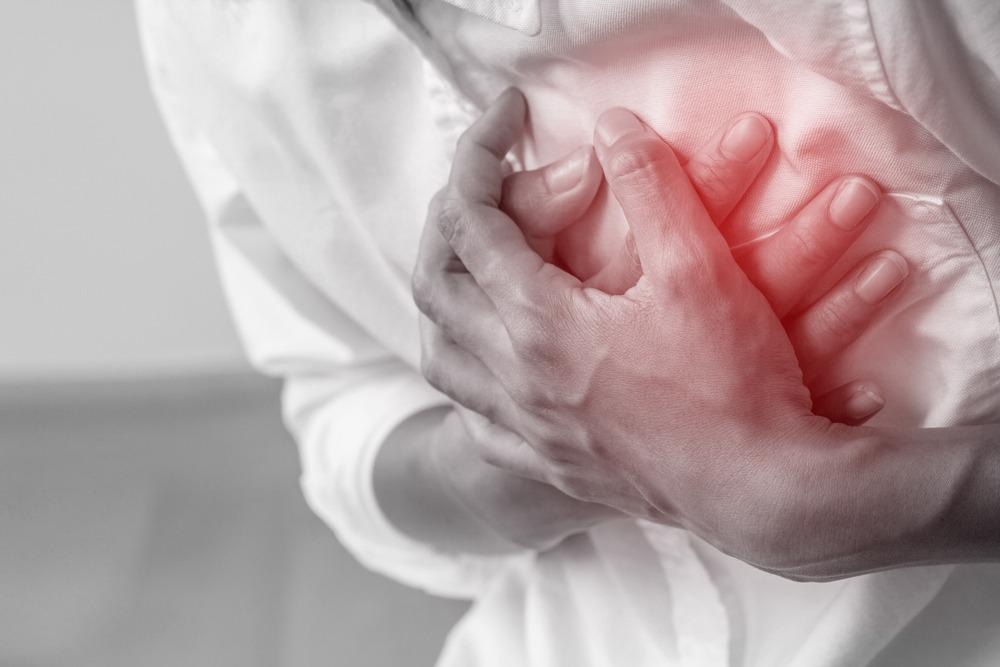My name is Dr. Damini Dey. I am a scientist and professor working with quantitative cardiovascular imaging at Cedars-Sinai Health System in Los Angeles. We have been working with artificial intelligence (AI) to improve the prediction of cardiovascular events, such as heart attacks, and efficient and automated measurement of imaging biomarkers.
We have been working on this task for a number of years. Our goal is to accurately measure all the plaque in the coronary arteries simply and automatically.
With AI gaining increased awareness within science, what are some of the current obstacles in the way of it becoming more widely used within healthcare and clinical settings?
The biggest obstacle is the availability of high-quality, multicenter data, which is an ongoing issue for all the scientists working with AI.

Image Credit: PopTika/Shutterstock.com
You have now designed an AI tool that makes it easier to predict whether a person will have a heart attack. Can you describe how you designed this tool and how it works?
Plaque buildup can cause arteries to narrow, making it difficult for blood to get to the heart, increasing the likelihood of a heart attack. A medical test called coronary computed tomography angiography takes 3D images of the heart and arteries and can give doctors an estimate of how much a patient’s arteries have narrowed. However, there has not been a simple, automated, and rapid way to measure the plaque visible in the CTA images.
The AI tool works with the patient’s coronary CT angiography scan and can be used immediately after the scan. The AI algorithm was trained to measure plaque by learning from coronary CTA images from 921 people that trained doctors had already analyzed.
The algorithm outlines the coronary arteries in 3D images, then identifies the blood and plaque deposits within the coronary arteries. We found the tool’s measurements corresponded with plaque amounts seen in coronary CTAs. The measurements also matched results with images taken by two invasive tests considered to be highly accurate in assessing coronary artery plaque and narrowing: intravascular ultrasound and catheter-based coronary angiography.
Finally, we discovered that measurements made by the AI algorithm from CTA images accurately predicted heart attack risk within five years for 1,611 people who were part of a multicenter trial called the SCOT-HEART trial.
In your latest research, you measure coronary plaque to determine an individual’s risk for a heart attack. Why is there currently no automated way of measuring this from computed tomography angiography (CTA) images?
This is mostly because the task is challenging, especially outlining the high-risk noncalcified plaque in the CTA images.

Image Credit: zentradyi3ell/Shutterstock.com
What advantages would being able to predict heart attack risk have not only for healthcare professionals but the patients themselves also?
It would help physicians find the right answers for the patients and, for the patients undergoing CTA, allow them to find out the effects of therapy and lifestyle on their heart health.
What do you believe the future of AI in healthcare to look like? Are there any particular fields that you are excited to see its adoption in?
I believe AI will increase the efficiency of healthcare. I’m particularly excited to see its adoption in all aspects of medical imaging (acquisition, reconstruction, and processing) and in integrating patient data.
What further research needs to be carried out before this tool can be routinely used within clinical settings?
The next steps are to do more validation and then follow the steps to make it available for everyone.
Where can readers find more information?
Please find links to our research here:
About Dr. Damini Dey
Damini Dey, PhD, is a professor and research scientist at the Biomedical Imaging Research Institute within the Department of Biomedical Sciences at Cedars-Sinai Medical Center. Dr. Dey is also the director of the Quantitative Image Analysis Program and technical co-director of PET-MR at the Biomedical Imaging Research Institute at Cedars-Sinai. She has received awards from the National Heart Lung and Blood Institute/National Institute of Health and from the Winnick Family Foundation. She serves as the data science section editor for Circulation: Cardiovascular Imaging.
Her research investigations include: artificial intelligence-based analysis of cardiac images to predict and prevent heart attack; machine-learning integration of imaging biomarkers towards precision medicine; quantitative noninvasive cardiac imaging; automated coronary artery analysis from cardiac CT - measurement of total plaque burden and epicardial fat burden; improving image quality and image acquisition and analysis in PET-MR, and reducing radiation dose in cardiac CT and cardiac PET-CT.